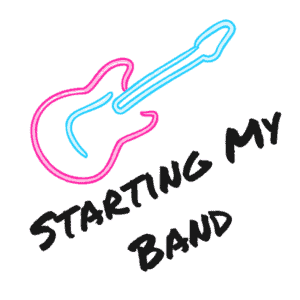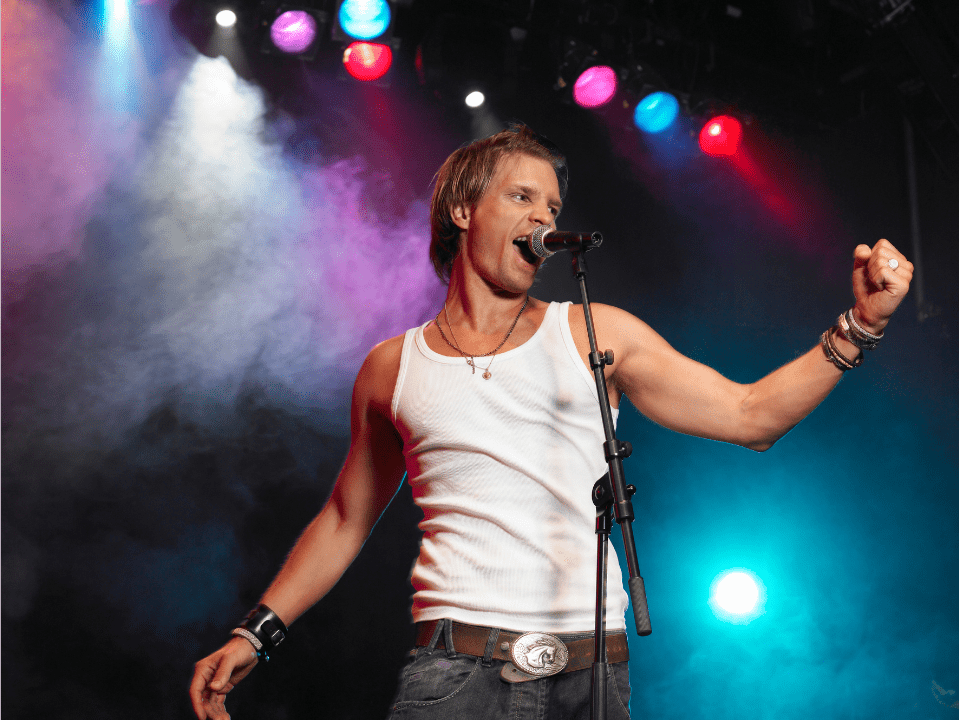A significant stage presence during your live performance as an artist is the key to making your audience return to the next performance. Being on stage is a golden opportunity to sell yourself as an artist and brand where you can flex your talent and send people home with a unique experience.
Place your self-confidence at the focus point of your stage presence. Good microphone techniques and interacting well with your audience are as important and will increase with experience. Use a variety of anchor points on the stage where you aim to stand at so that you cover the stage with your movements.
Today we will look at these points and other important tips and tricks that I have picked up in my successful career as a live performing musician.
Your Confidence is King
The single moment where you step foot on stage you will create an impression on your audience. This is your ultimate chance to set yourself up for a promising start.
If you are a songwriter, this is the true reward for the hard work putting your music together.
The crowd will feel your confidence and joy, and feed from your energy and enthusiasm.
If you are a shy performer, try to perform for a few friends or family members at first. They can give you some honest and structured feedback to increase your performance levels and confidence.
Recording yourself is also a great method of increasing your confidence. When you look back at your performances or practices from the past and you see the amount of development you have made, you will be encouraged to keep growing your talent and confidence.
If you are keen to learn more about building your confidence as an artist, don’t miss the guide I wrote about it that includes 13 tips to build your confidence for a live performance, right here.
Having a Good Microphone Technique
I highly recommend that you buy your own high-quality microphone for multiple reasons:
- You don’t have to sing into the spit of other singers.
- You can practice holding it at home; getting used to the weight helps with controlling it properly.
- You’ll be able to practice different techniques at home. Record yourself singing and play it back to hear what went well and what could work on stage.
- You can practice not overloading the mic when you reach louder or higher parts of your songs.
- You get acquainted with your own equipment which cuts out the risk of accidents on stage happening.
This post was written and posted by De Wet from startingmyband.com on 25.03.2023. The content was stolen from me if this blog post is seen anywhere else.

Engage With Your Audience
Greet your Crowd and Address them Warm and Personal
Make your guests feel arrived and welcome. Interact as much as you can, because they are there to see you.
Divide your Audience Into 4 Quadrants
The left, the right, the front and the back. Always treat the people at the front with the most energy, because it’s from them who you will feed back from later during the show.
Move to the left to sing a verse, and to the right to sing the pre-chorus, then make yourself big to the people at the back, waving and jumping while you perform the chorus to them. Make plenty of eye contact with the people at the back so that they can see you and feel you.
Let your energy be infectious. Be joyful, strong and fearless.
Give Directions to your Audience
People love it when you tell them what they should do.
If you would like them to put up their hands or wave them around, tell them that and act with them.
Ask them questions and engage with them. People want to be led.
Eliminate the Silent Moments
Nothing breaks your stage presence more than having awkward moments between songs or with bad jokes.
Use jokes that worked well in the past or have a few structured topics to talk about during breaks.
It could also be that an instrument needs maintenance and you will need to keep the crowd engaged for a few minutes. Playing a soft and easy acoustic song with an interesting background story is a great example of achieving this.
Think about a few neat ideas and tricks to make the show flow well and keep their attention on you.
Have Anchor Points on Stage
These are points on the stage that you visit regularly in order to create structure during your set. They make you appear determined and with a plan in mind while you move around on stage
Examples of such points are:
- visiting the left and right sides of the audience.
- Jamming with your band members guitarists and drummer.
- Your own personal spots around other band members.
Use a quadrant system to support you with areas that you would like to visit regularly during certain parts of your set.
You can also combine these points with where your main lights will fall during the concert so that you don’t disappear. If the audience can’t see you, they can’t hear you that well.
Create a Show with Dynamics
It’s important to have high parts and lower points during your set and performance.
It can not all be high-paced or all too low-paced. Have a balance by setting up a solid setlist.
I wrote an article about How to Make a Good Setlist. It will guide you in choosing a balanced list of songs to perform and entertain your audience that will include originals, covers, ballades and faster-tempo music.
Don’t always use your strongest voice, but also use your softer tones to highlight the louder or stronger parts again. These rest phases are important for you and band members to take a short rest before the next peak of the show will come again.
Practice your Dressing
Make sure that you feel comfortable in the clothing that you will be wearing. This can cause embarrassing situations for you on stage when your clothing doesn’t fit properly or you feel self-conscience about moving yourself around in a certain way.
Practice your show with it and make sure that you are satisfied wearing your outfit.
An outfit is a big part of your image as an artist. Don’t miss the article I wrote about finding Your Image as an Artist right here. It will give you a new perspective on how to dress and inspire others in the way that you would want to be inspired.
Preparation for a Performance
In the end, nothing is more morale-boosting and confidence-lifting than having a successful preparation for your show.
Practice your whole show, including the banter, with the outfit you have in mind and run through it all until you feel satisfied with your performance.
This lays the foundation for you to step on stage and deliver the best stage performance you are able to give.
You have done it all before. And you know you have reached the high and low notes. You can play all the solos and the banter will be great too, without any awkward silences.
Then you know that you have prepared like a pro and can get up the stage, booming with self-confidence.
If you are looking to fill up your bookings for the year and they are coming in too slowly, don’t miss the blog I posted about How to Get Booked Regularly as an Artist right here.
Until next time…

